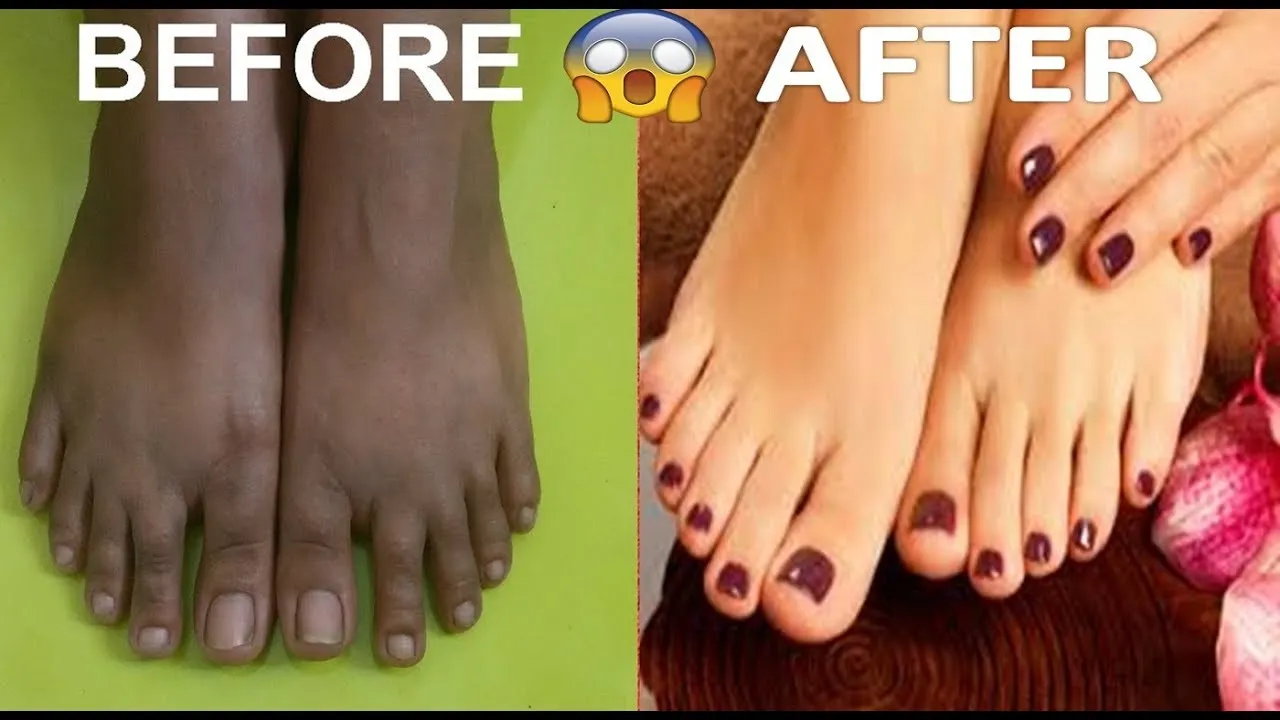Understanding Feet Discoloration
Discoloration on the feet can be a source of self-consciousness for many people. Various factors can contribute to this issue, ranging from simple sun exposure to more complex skin conditions. Understanding the underlying causes is the first step towards finding effective solutions and achieving brighter, more even-toned skin on your feet. This knowledge empowers you to choose the most appropriate methods to address the specific reasons behind your feet’s discoloration, ensuring a tailored approach that yields the best possible results. Moreover, awareness about the causes helps in adopting preventive measures, which can help maintain the desired skin tone and overall health of your feet. It is important to remember that while some causes are easily reversible, others may require professional intervention or ongoing care, depending on the root issue.
Common Causes of Feet Discoloration
Sun Exposure and Tanning
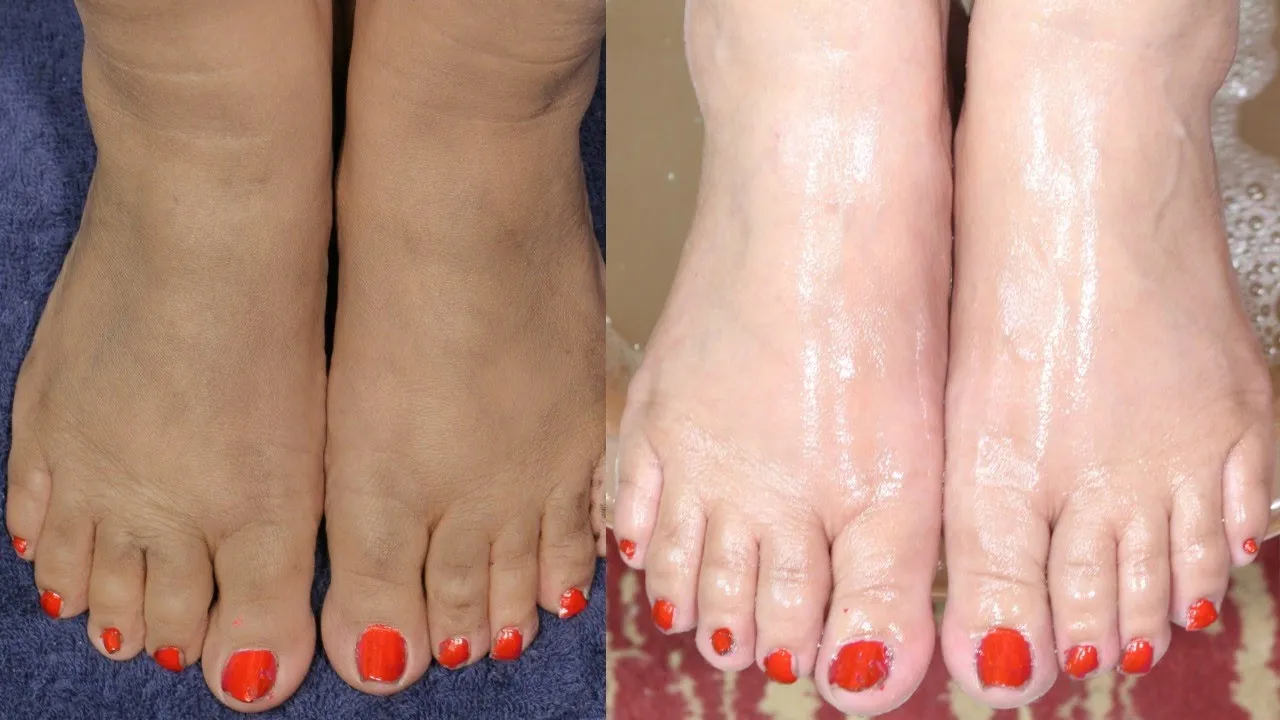
Just like any other part of your body, your feet are susceptible to the harmful effects of the sun. Prolonged sun exposure can lead to tanning, which causes the skin to darken. This is due to the increased production of melanin, a pigment responsible for skin color. The feet, often exposed during outdoor activities, are particularly vulnerable. Over time, this can lead to uneven skin tone and dark patches. Regular use of sunscreen on your feet, especially during sunny hours, is essential to protect against this. Choosing a broad-spectrum sunscreen with a high SPF will help prevent tanning and further discoloration. Furthermore, wearing protective footwear or socks can provide an additional layer of defense against the sun’s rays, safeguarding the skin of your feet.
Skin Conditions
Various skin conditions can cause discoloration on the feet. Conditions like eczema, psoriasis, and athlete’s foot can lead to inflammation, scaling, and changes in skin pigmentation. Eczema often presents as itchy, red, and inflamed patches, which can sometimes result in darker or lighter spots after the inflammation subsides. Similarly, psoriasis causes thick, scaly patches that can affect skin tone. Athlete’s foot, a fungal infection, can cause redness, scaling, and blisters, potentially leading to discoloration. Addressing these conditions requires specific treatments, often prescribed by a dermatologist. This might include antifungal creams, medicated lotions, or oral medications, depending on the severity and nature of the skin condition. It’s crucial to consult a healthcare professional to get an accurate diagnosis and appropriate treatment plan.
Footwear and Friction
The type of footwear you wear and the friction it causes can also contribute to feet discoloration. Tight or ill-fitting shoes can cause friction, leading to the darkening of the skin over time. This is particularly common on areas like the heels and the sides of the feet. Additionally, the materials of your shoes, such as certain dyes, can sometimes transfer onto the skin, causing discoloration. Regularly changing your footwear and selecting shoes that fit well and provide adequate ventilation can help minimize friction and reduce the risk of discoloration. It’s also helpful to choose breathable materials like cotton or leather, which can reduce the amount of sweat and friction your feet experience, thus decreasing chances of discoloration. Ensuring socks made from comfortable materials will also help with minimizing friction.
Top 5 Proven Methods to Whiten Feet
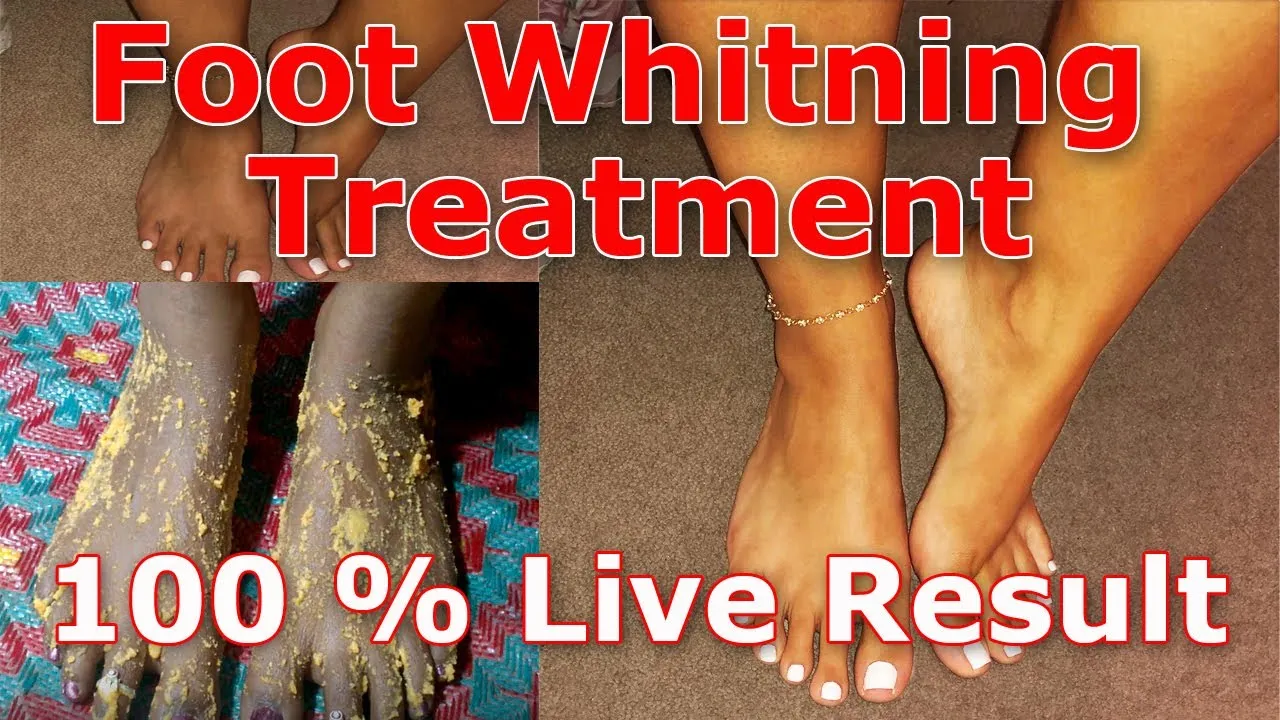
Exfoliation for Brighter Skin
Benefits of Exfoliation
Exfoliation is a crucial step in any feet-whitening routine. It involves removing dead skin cells from the surface of your feet, revealing brighter and smoother skin underneath. Regular exfoliation helps to eliminate uneven skin tone, reduce dark spots, and improve the absorption of whitening products. By removing the build-up of dead cells, exfoliation also allows for better circulation, which can contribute to healthier skin. This process enhances the overall texture of your feet, making them feel softer and look more radiant. Consistent exfoliation will significantly improve the effectiveness of other treatments by allowing them to penetrate deeper into the skin. Proper exfoliation combined with moisturizing helps maintain the skin’s natural balance.
Exfoliation Techniques
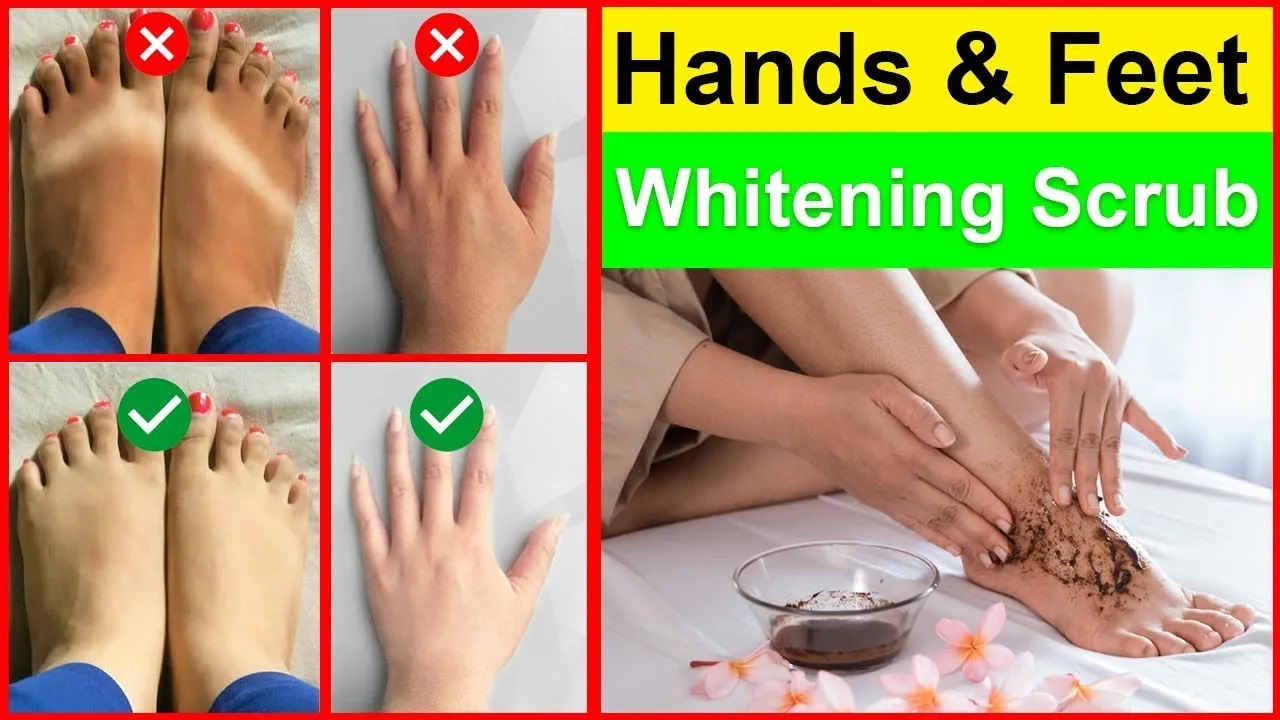
There are various ways to exfoliate your feet effectively. Using a pumice stone or a foot file on damp skin during a shower can help remove dead skin. Gentle circular motions are key to avoid irritation. Alternatively, you can use exfoliating scrubs containing ingredients like sugar, salt, or coffee grounds. These scrubs gently buff away dead cells. Chemical exfoliants, such as those containing alpha-hydroxy acids (AHAs) or beta-hydroxy acids (BHAs), are another option. These products help dissolve the bonds that hold dead skin cells together. Regardless of the method, always moisturize your feet after exfoliation to keep them hydrated and healthy. Regular exfoliation, done once or twice a week, can significantly improve skin texture and reduce discoloration.
Homemade Remedies
Lemon Juice and Baking Soda
Lemon juice and baking soda are popular natural remedies for feet whitening. Lemon juice is a natural bleaching agent due to its citric acid content. Baking soda acts as a gentle abrasive and can help exfoliate the skin. To use this method, mix lemon juice with baking soda to form a paste. Apply the paste to your feet, gently scrub for a few minutes, and then rinse with lukewarm water. Follow up with a moisturizer to prevent dryness. The acidity of lemon can make your skin more sensitive to sun exposure, so it’s essential to apply sunscreen if you are going outside. This treatment is best done a couple of times a week. Continuous use can gradually lighten the skin and improve its appearance. Lemon juice can also help with the removal of dead skin cells and reduce dark spots.
Yogurt and Turmeric Mask
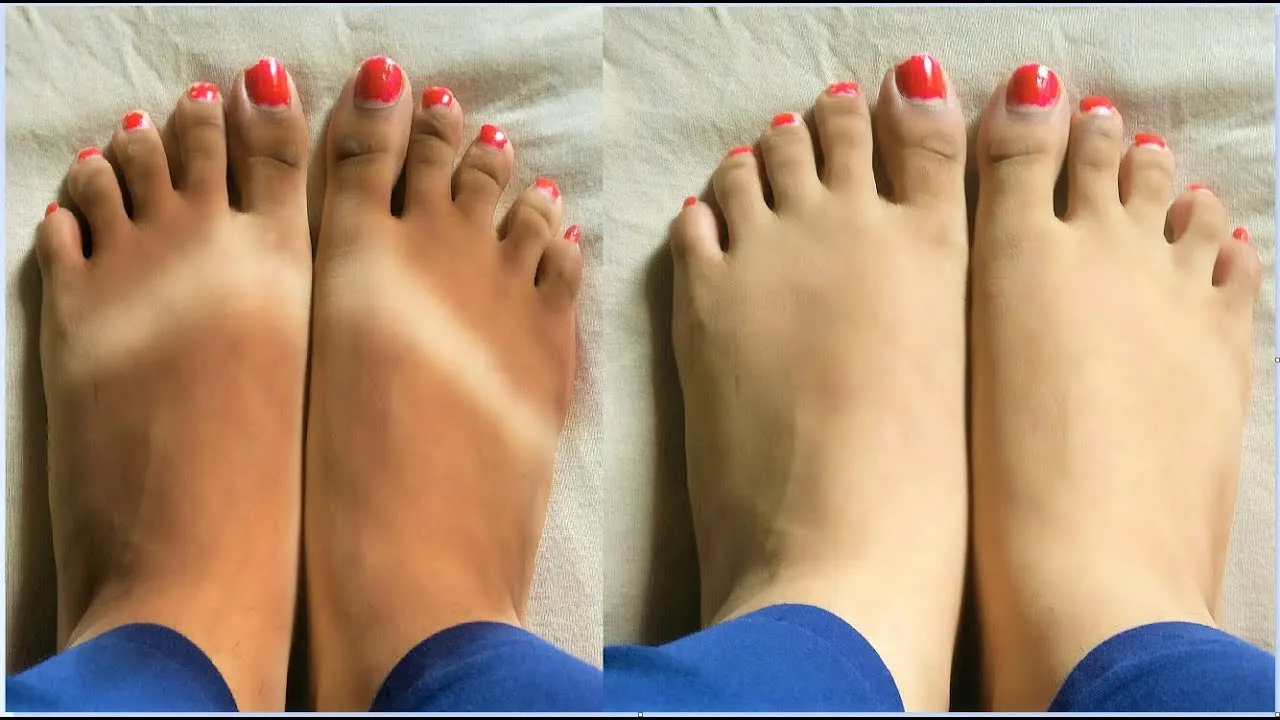
Yogurt and turmeric make a powerful combination for feet whitening. Yogurt contains lactic acid, which exfoliates and brightens the skin, while turmeric has anti-inflammatory and antioxidant properties. To make this mask, mix plain yogurt with a pinch of turmeric powder. Apply the mixture to your feet and leave it on for 15-20 minutes before rinsing it off with cool water. This mask not only helps in whitening the skin but also improves skin texture and reduces inflammation. It is a gentle and natural way to address discoloration. The antioxidants in turmeric can help protect your skin from damage. Repeat this process several times a week for best results. Moisturizing the feet after use will keep skin smooth and hydrated.
Over-the-Counter Whitening Creams
Over-the-counter whitening creams offer a convenient solution for feet discoloration. These creams typically contain ingredients like hydroquinone, kojic acid, or vitamin C, which work to inhibit melanin production and lighten the skin. While these products are readily available, it’s important to select ones that are appropriate for your skin type and follow the manufacturer’s instructions carefully. The concentration of active ingredients and the frequency of application can vary depending on the product, so it’s best to start with a low concentration and gradually increase if needed. Be sure to perform a patch test before applying the cream to your entire feet to check for any adverse reactions. Consistency is key when using whitening creams, and it’s usually several weeks before you start seeing noticeable results.
Ingredients to Look For
When choosing over-the-counter whitening creams, look for specific ingredients known for their skin-lightening properties. Hydroquinone is one of the most effective but can have side effects, so it should be used with caution and as directed. Kojic acid is a natural alternative derived from fungi that helps to inhibit melanin production. Vitamin C, an antioxidant, can brighten the skin and protect it from damage. Other beneficial ingredients include niacinamide, which helps to even out skin tone, and arbutin, a natural compound that inhibits melanin production. Always read the ingredient list and consider your skin’s sensitivity before selecting a product. For sensitive skin, it’s important to choose creams with lower concentrations of active ingredients and perform a patch test before full application.
How to Apply Creams
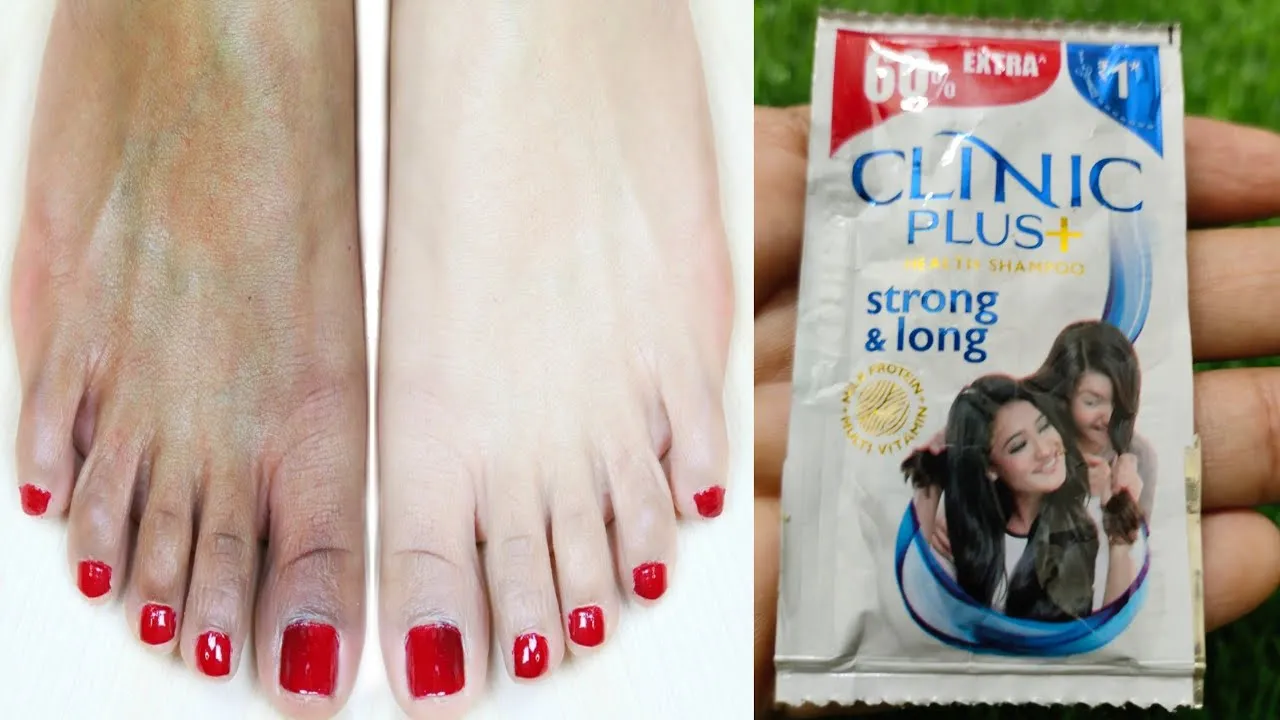
Proper application of whitening creams is critical for achieving the best results. First, ensure your feet are clean and dry before applying the cream. Apply a thin layer of the cream to the affected areas, gently massaging it in until fully absorbed. It’s usually recommended to apply the cream twice daily, in the morning and before bed, or as directed by the product instructions. Be patient, as it may take several weeks or months to see significant changes. It’s essential to protect your feet from the sun by applying sunscreen, as whitening creams can make your skin more sensitive. Regular follow-up with a dermatologist or healthcare professional is recommended to assess the cream’s effectiveness and address any potential side effects. Remember to store the cream properly to maintain its effectiveness and shelf life.
Professional Treatments
For more stubborn cases of feet discoloration, professional treatments can provide more potent solutions. These treatments are typically administered by dermatologists or qualified skin care professionals. They offer targeted approaches to address the underlying causes of discoloration and can yield significant improvements in skin tone. Professional treatments often involve advanced techniques that may not be available with at-home remedies or over-the-counter products. These treatments can provide faster and more effective results than at-home methods. Consulting with a professional helps you assess the best treatment plan based on the severity of the discoloration and your skin type. Also, these treatments often require aftercare instructions and may have some downtime, depending on the specific procedure.
Chemical Peels
Chemical peels are a popular professional treatment that involves applying a chemical solution to the skin to exfoliate and remove the damaged outer layers. This process promotes the growth of new, evenly pigmented skin. Different types of chemical peels, varying in strength, are available to treat different degrees of discoloration. The stronger the peel, the deeper it penetrates the skin and the more dramatic the results. After the procedure, the skin may appear red, swollen, and sensitive. The recovery time varies based on the strength of the peel, but generally takes a few days to a couple of weeks. Chemical peels can effectively reduce dark spots and uneven skin tone, giving the feet a brighter appearance. It’s crucial to follow aftercare instructions carefully, which usually include avoiding sun exposure and moisturizing regularly.
Laser Therapy
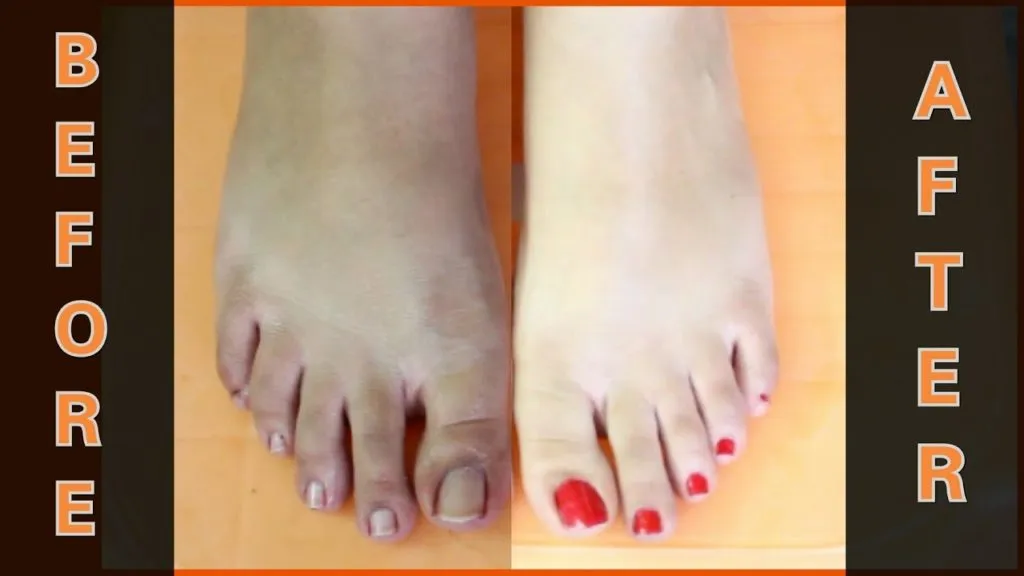
Laser therapy is another advanced professional treatment that can be used to whiten feet. It involves using focused light beams to target melanin and reduce discoloration. Different types of lasers can be used, depending on the specific type of discoloration and the patient’s skin type. Laser treatments are often used for spot treatments, such as for dark patches or sunspots. The procedure is typically performed in multiple sessions to achieve the desired results. The recovery time is usually relatively quick, with minimal downtime. Laser therapy can offer precise and effective treatment options, and the results can be long-lasting. It’s essential to consult with a qualified professional to determine if laser therapy is appropriate for your skin type and to understand the potential risks and benefits of the treatment.
Maintaining Results and Preventing Discoloration
Maintaining the results of your feet-whitening efforts and preventing future discoloration requires a consistent and proactive approach to foot care. This involves establishing a daily routine, protecting your feet from the sun, and making smart choices about footwear. This proactive approach ensures that your feet remain healthy and the skin tone remains even. Consistency in your care routine, coupled with protective measures, will not only preserve your results but also promote overall foot health and well-being. Regular care is essential for preventing the recurrence of discoloration and maintaining the skin’s youthful appearance and vitality. This maintenance strategy helps to minimize the need for more intensive treatments in the future.
Daily Foot Care Routine
A consistent daily foot care routine is the cornerstone of maintaining bright and healthy feet. This routine should include washing your feet with a gentle cleanser every day, especially after exposure to sunlight or after sweating. Drying your feet thoroughly, particularly between the toes, is essential to prevent fungal infections. After washing and drying, apply a moisturizing lotion to keep the skin hydrated and prevent dryness, which can exacerbate discoloration. Exfoliating once or twice a week helps remove dead skin cells and promote even skin tone. Regularly inspecting your feet for any signs of new discoloration or skin conditions is equally important, as it allows you to address problems promptly. This daily regimen is simple yet effective in preserving the results of your whitening treatments and keeping your feet in optimal condition.
Protecting Feet From Sun
Protecting your feet from the sun is crucial to prevent and minimize discoloration. Apply a broad-spectrum sunscreen with an SPF of 30 or higher to your feet before any outdoor activities. Reapply the sunscreen every two hours, or more frequently if you’re swimming or sweating. If you’re spending extended time in the sun, consider wearing protective footwear, such as closed-toe shoes or sandals, to provide an extra layer of defense. Seeking shade during peak sun hours (typically between 10 AM and 4 PM) can further reduce sun exposure. Consistent and diligent sun protection is one of the most important steps to maintain the results of feet-whitening treatments. Incorporating these measures into your daily routine is a proactive and effective approach to maintaining healthy and even-toned feet. Make sun protection a non-negotiable part of your feet care.
Choosing the Right Footwear
Choosing the right footwear plays a significant role in preventing feet discoloration. Opt for shoes that fit well, provide adequate support, and allow your feet to breathe. Avoid shoes that are too tight or that rub against your skin, as this can cause friction and lead to darkening. Choose shoes made from breathable materials like leather or cotton, which help to reduce sweat and the potential for discoloration. Regularly inspect your shoes for any signs of wear and tear, such as rough edges or uneven surfaces, that could cause friction. Consider wearing socks made from moisture-wicking materials to further reduce friction and absorb sweat. Making smart choices about footwear will keep your feet healthy and help maintain an even skin tone. Prioritizing comfort and proper fit in your footwear is a long-term strategy for feet care.
